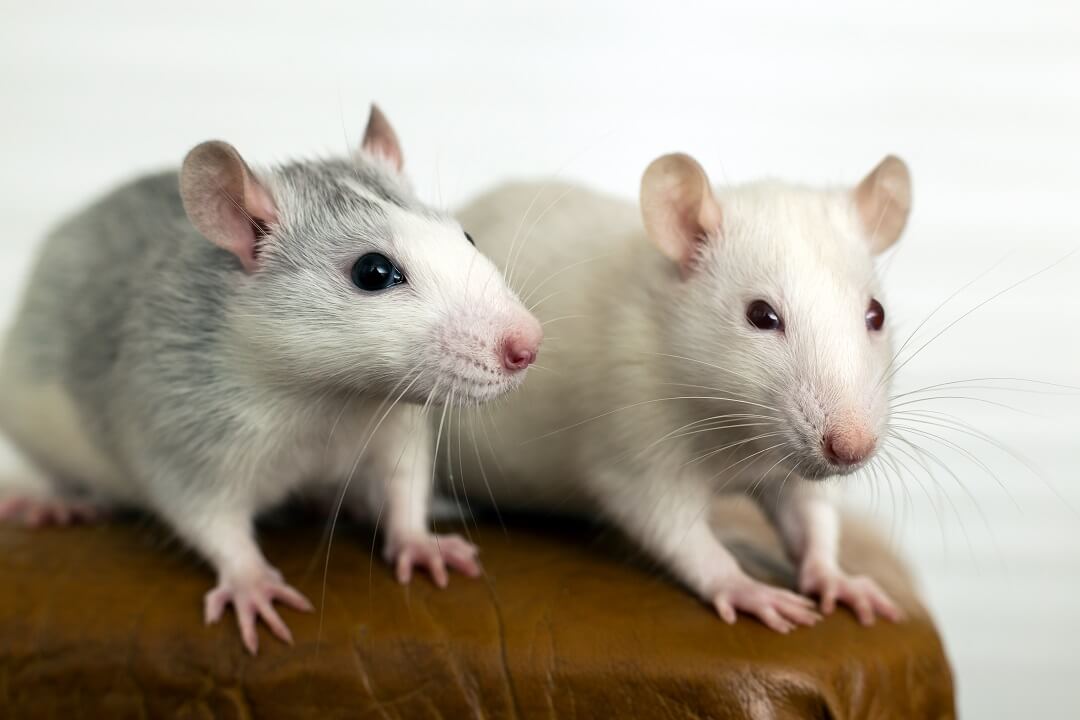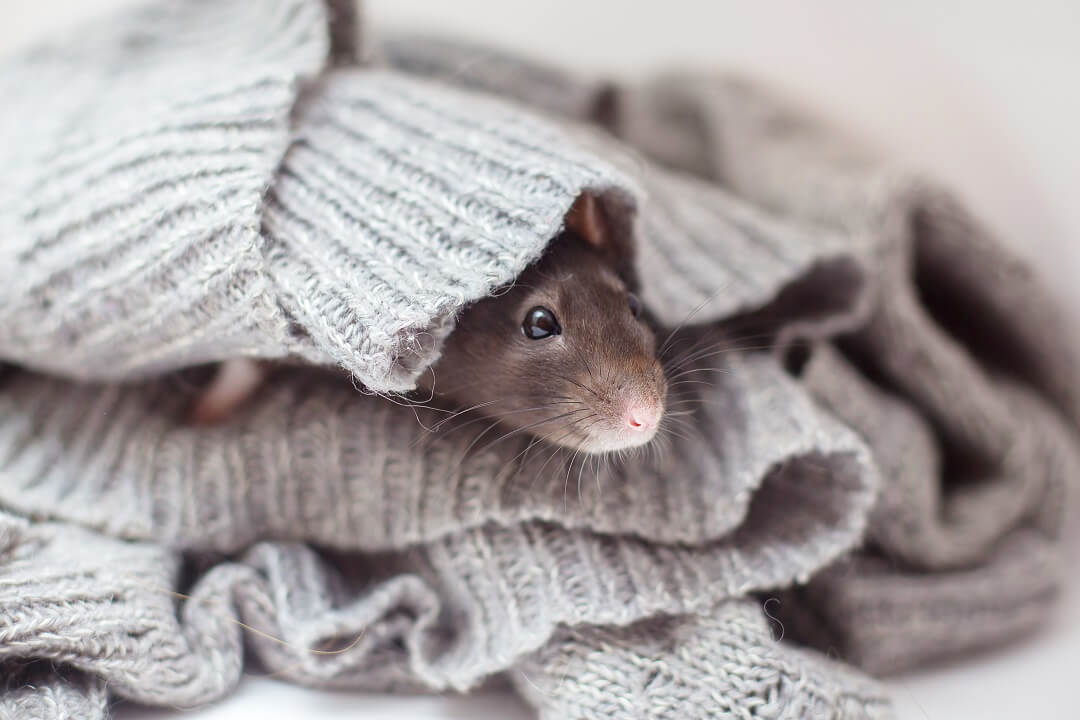A rodent infestation is not something any homeowner wants to have, but is it better to have mice or rats? What are the differences between these two common rodents, and what do these differences mean for you? While both mice and rats pose a significant risk of damage as well as health risks, there are some distinct differences between the two other than just appearance. Learning to identify these differences can help you better prepare when it comes to dealing with an infestation.
Key takeaways
- Both mice and rats can cause significant structural damage, as well as transmit bacteria and other microorganisms that can cause severe disease and even death. In addition, their presence inside a home or building can trigger allergens.
- While both rodents will chew through food packages, wiring, and more, rats have a much stronger bite and can chew through aluminum, sheet metal, and even cinder blocks.
- Mice are curious creatures and are more likely to explore and be caught in a trap. In contrast, rats are more cautious and are unlikely to explore new things, meaning trapping them can be much more difficult.
How can you tell a mouse from a rat?
While simple size differences between a mouse and a rat are usually obvious, when they scurry across your path in the middle of the night, it may be a little more difficult to identify which rodent has moved in. Here we take a look at some of the key differences between mice and rats and things to look for if you think you may have a rodent problem.
Physical appearance
In terms of appearance, both mice and rats can be similar in color, so this is not a good distinguishing factor. However, size is probably one of the easiest ways to distinguish an adult mouse from an adult rat. Mice are typically much smaller than rats. The average house mouse is between two and four inches in length, while rats, such as the Norway rat or roof rats, can measure over nine inches in length. Another difference is the shape of the snout. A mouse has a more triangular nose while a rat has a blunter snout. Another way to tell the difference between these two rodents is the tail. Mice have long, thin tails covered in hair, while rat tails are hairless and scaly in appearance.
Mice and rat behavior
Mice are very curious creatures and are always exploring new places and opportunities. This is why it is much easier to catch a mouse in a trap. Rats, on the other hand, are very cautious and reluctant to investigate new things, meaning you are less likely to catch them in a trap. Mice typically enter a building in search of food, shelter, and a warm place to nest and give birth. They will chew through whatever is in their way to get to what they want. Rats, on the other hand, enter for food, shelter, and a water source. While they are exceptional chewers, rats are more likely to dig or burrow to get to where they want.
Habitat
Mice are agile and good climbers that can fit through even the smallest of openings, so no space in your house is off limits. Rats are good climbers, but they prefer to live in lower levels, making them more prone to basements or crawlspace dwellings.
Eating habits
Mice will eat anything that you or your pets enjoy. They can chew their way through unopened containers, such as cereal boxes, contaminating all food sources they leave behind. Rats will also eat anything they can find or gain access to; however, they prefer meats and fresh grains.
Droppings
Because mice and rats are nocturnal, your first sign of a potential infestation is the presence of droppings or poop. A rat produces 20 to 50 droppings per day that are spread out. Rat droppings measure between ½ and ¾ of an inch in length with blunt ends. New droppings will be dark and shiny in appearance while older ones may appear chalky and dry.
Mice can produce more than 100 droppings per day and are much smaller in size, with the average dropping measuring under ¼ inch in length. Mice droppings are pointed on each end and are often found in clusters.

Similarities between rats and mice
While you can see the differences between these two rodents, there are many more similarities. Both rats and mice can be very destructive, causing structural damage to everything from wiring to insulation. Both of these rodents adapt well to any environment and breed very quickly, meaning they can move into your home business and create a large infestation before you even see any signs.
Which one causes more damage – Rats or mice?
The presence of either mice or rats in your home or business means that significant damage can or has already occurred. While both rodents will eagerly chew through food packaging and wiring, rats can be slightly more destructive. For example, a mouse is unable to chew through metal or glass, so food stored in these containers is relatively safe. However, rats can chew through just about anything, including glass and sheet metal, meaning most food storage containers are no match for rats. In addition, rats are known to chew through a variety of building materials, such as aluminum, wood, glass, sheet metal, and even cinder blocks, meaning they have the ability to cause greater structural damage.
Which is more dangerous?
Both rats and mice pose a significant risk to health as they can spread bacteria and other microorganisms that can cause severe illness and disease. They can contaminate foods with salmonella while also spreading rat bite fever, hantavirus, and even the plague. Many of these conditions pose a serious health risk and can even be fatal. However, rats are often considered more dangerous as they tend to be more aggressive and pose a bite risk.
What to do when I have a rodent infestation?
If you suspect a mouse or rat infestation, it is recommended that you contact professional rodent control or pest control companies to address the problem. While you may be able to handle a mouse infestation early on with mouse traps, controlling a full-blown infestation can be very difficult. If you have rats, setting a few traps will not be enough to take care of even the smallest infestations, as rats are very unlikely to investigate a new trap.
Understand which rodents may be sharing your space.
Once you can distinguish between mice and rats, you have a better idea of what to do about an infestation. If caught early, eliminating mice can often be done without the help of an exterminator. However, because mice breed so quickly and produce litters with as many as six new mice each, you likely have a large infestation before you even see the signs. Rats, on the other hand, are more difficult to trap and eliminate and most often require professional pest control services.
Eliminate rodents from your home or business.
Seeing a rat or mouse scurrying across your floor in the middle of the night is enough to make anyone jump, but the good news is you don’t have to share your home with these rodents. At Insight Pest Management, our team of experts understand rodent behavior and will quickly identify your infestation and create a multi-staged trap-out program that will not only address and eliminate rodents inside your home but also take action to create an outdoor perimeter that will help keep all rodents out! To learn more, request an appointment today.


